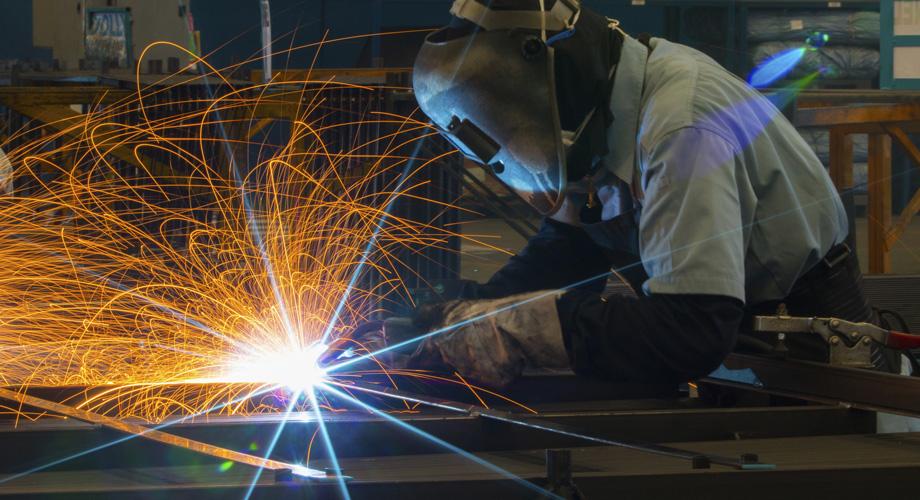A production monitoring system for welding operations needs to have certain capabilities if it’s going to be effective. First, it needs to be able to track progress on individual welding jobs. This information should be stored in a centralized location so that it can be accessed by authorized personnel. Second, the system should be able to generate reports that show how each welder is performing. These reports should include information on weld quality, efficiency, and throughput. Third, the system should include features that allow authorized personnel to make changes to welding processes in real-time. This might include the ability to remotely adjust welding parameters or shut down welding machines when necessary.
Finally, the system should be scalable so that it can grow along with the welding operation. Choosing a production monitoring system with these capabilities will help to ensure that the welding operation runs smoothly and efficiently.
What to Consider when choosing a Weld Production Monitoring System
Originally shared in WELD Magazine’s Fall 2020 Edition, IRCO Automation and IRCOpulse explore Weld Production Monitoring in a time when many companies are and were faced with a period of recovery and reinvention.
With various production monitoring systems available, companies are faced with the challenge of deciding which system is the best fit. Unfortunately, the importance of customizable data and metrics (as explained in the previous section) is just one piece to the puzzle. Not all production monitoring systems or their providers deliver a full capability spectrum. They may offer different features or have varying degrees of capability regarding accessibility, support, and compatibility. So, how do you choose? Here’s a guide of tips and questions to give suggestions of what you should consider when choosing a production monitoring system.
We’ve broken this guide down into three sections:
- Essential Features
- Optional features depending on your preferences or in-house abilities, and
- The Stakeholders
Essential Features:
There are essential features and qualities that any system should provide, such as:
- Security and integrity of your data
- Scalability so that your data set can grow with your company
- Real-time support to avoid interruptions to your operations.
.png?width=547&name=PRODUCTION%20MONITORING%20TRACKS%20(12).png)
Important Optional Features
The discovery and research process will require you to consider your preferences regarding capital expenditure, in-house resources, and cloud-based storage. Your decision will be highly impacted by your preferences in these areas of consideration. To determine whether one system is a better fit for you over another, ask yourself the following questions:
- Do we want an “off the shelf” production monitoring system from a generic provider or a customized solution from a more dynamic provider?
- Do we have policies that require us to use local storage or can we use cloud-based data storage?
- Do we want to (or, have the ability to) leverage in-house custom-built and supported server infrastructure, or do we have the flexibility to use third-party leading providers, such as Microsoft, Google, AWS (with the benefits of their security, scalability, support, etc.)?
- Do we want to make a large up-front capital investment or lower capital investment with scalable monthly charges for subscription-based devices and users?
- Do we want the data just for managers or for analysis offline, or do we want metrics presented to the shop floor personnel to react in real-time?
- Do we want a general interface or a customizable, unique experience for different members of our team?
The Stakeholders
Also, consider the different stakeholders who will be using the production monitoring system. Who will value and use the information collected by the system? What will they need it for?
.png?width=617&name=Copy%20of%20IRCO%20-%20Graphic%202%20(2).png)
The team at IRCOpulse ™ understands that not everyone involved in a manufacturing process or project is interested in the same types of data and insight.
Compare the unique concerns of a material purchaser, weld engineer, and maintenance manager. The challenges for a materials purchaser trying to reduce wasted consumables are unique from a weld engineer whose focus is the quality and repeatability of the weld process, and again very different from a maintenance manager with the responsibility to keep the automation and equipment running smoothly.
Production Monitoring: One size rarely fits all
In the world of big data and business intelligence, one size rarely fits all. Therefore, it is important to consider support for unique views for the different members of your team and find a provider nimble enough to work closely with you to customize these various user experiences.
Series Conclusion:
The world of manufacturing, fabrication, and welding is changing. Companies will be challenged to new levels of introspection and greater transparency as they navigate how to remain sustainable, profitable, and competitive in a global market. In addition to that, they are facing the lingering challenges of the pandemic, recession, and supply chain challenges at a time when Industry 4.0 is evolving rapidly around them.
As companies are presented with the opportunity to evolve, reinvent, or reshape themselves, automation and production-monitoring technologies provide a means to secure a competitive hold while also future-proofing for new markets. The addition of automation and production monitoring systems will facilitate an exciting journey for North American manufacturers as they continue to invest in new equipment and upgrade legacy platforms – an excellent opportunity to drive efficiency, profit, and sustainability.

